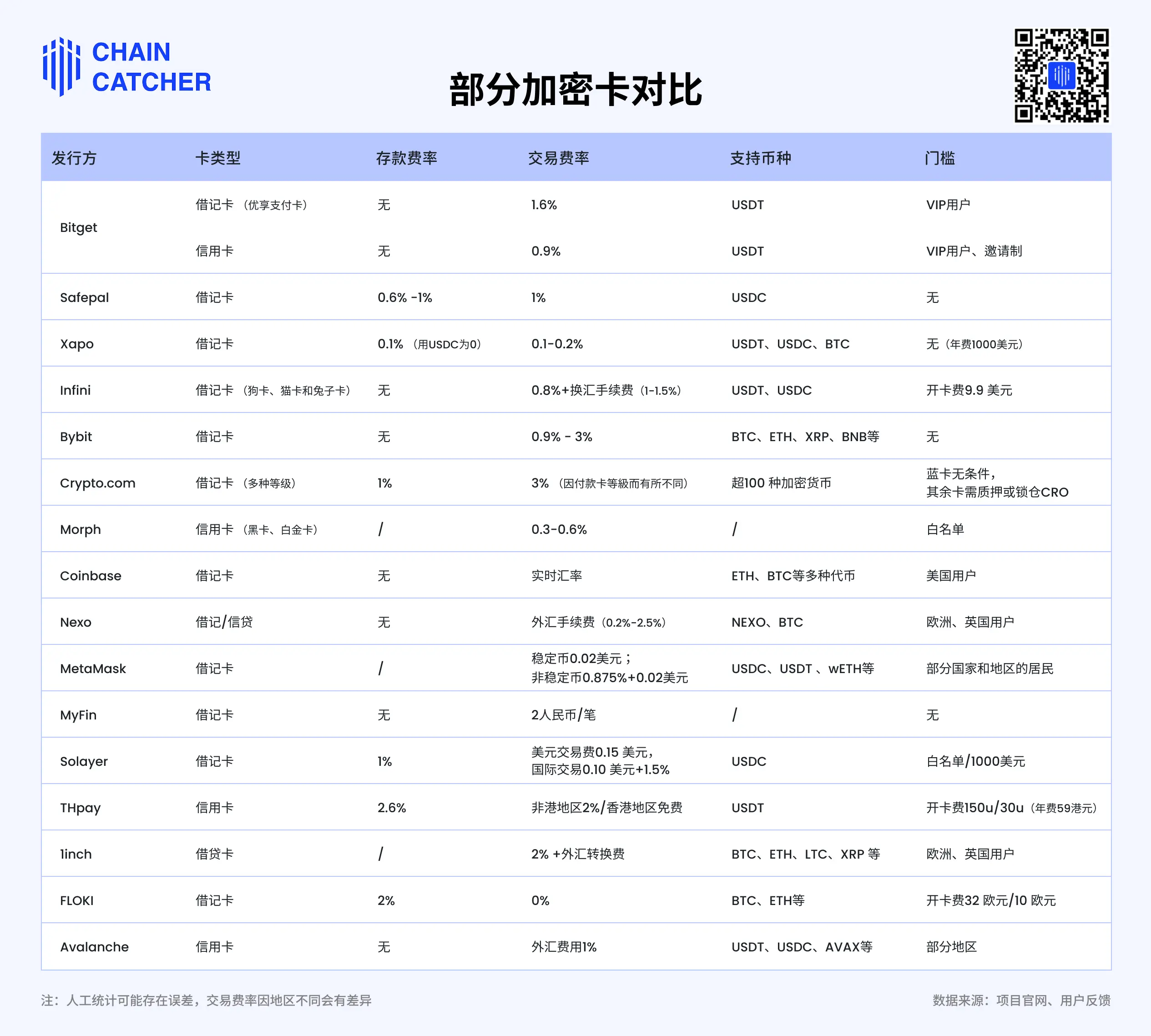Why do crypto projects flock to issue cards? A battle for access rights between Web3 and the real world
Original author: Fairy, ChainCatcher
Original editor: TB, ChainCatcher
The crypto industry is staging a peculiar “physicalization” movement: issuing cards.
Use USDT to order takeout, shop on JD.com, or even swipe cards to pay at convenience stores on the street. Digital assets that once only existed on the screen are now quietly breaking into the real world with the help of encrypted cards.
Is card issuance the golden key to connect Web3 with the real world, or is it just a short-lived and noisy traffic game?
This article will analyze the driving factors, competitive landscape and potential risks behind this wave of crypto payment craze to gain a clearer understanding of this industry leap.
The encryption card war has begun
Capital is betting, and projects are racing. According to RootData, there are currently 37 projects focusing on the crypto card business, many of which have received heavy investment from leading institutions. For example, the crypto credit card project KAST completed a $10 million seed round of financing led by Sequoia China and Sequoia India; the crypto card issuer Rain received $24.5 million in financing led by Norwest Venture Partners and followed by Coinbase Ventures, Circle Ventures, etc.
List of encryption card projects:
Image source: RootData
From Wanlian and Wansuo, it has now evolved to the "Wanka Era". This competition is not just a stage for startups. More and more leading players are participating in the competition. Exchanges, wallets, and public chains are unwilling to lag behind, trying to occupy a place in the key entrance for on-chain assets to offline consumption.
There are a wide variety of encryption card products on the market. The following is a comparison of some representative projects:

In the meantime, more cards are on the way:
OKX to launch OKX Card in partnership with Mastercard
Kraken Partners with Mastercard to Launch Crypto Debit Card
MetaMask, CompoSecure and Baanx will jointly launch "metal card"
....
A card has become a key springboard to connect Web3 with the real world, and is also a symbol of crypto assets moving from "speculative products" to "usable products". It is both a bridge and a battlefield. What is brewing behind this seemingly lively card issuance trend?
The business of encryption cards
Crypto cards are essentially a type of prepaid card product. When users recharge stablecoins such as USDT and USDC into this card, these assets are not “cashed out” into the card balance, but the card issuer allocates a corresponding amount to the user in a bank account opened in a traditional card organization system such as Visa/Mastercard.
The operating mechanism behind it is a highly centralized funding model, which is mainly divided into three parts: asset custody (used to meet user withdrawal needs), asset interest generation (used to obtain income), and asset advance payment (exchange for legal currency quota).
Image source: @yuexiaoyu 111
In this model, the profit sources of the card issuing platform are relatively clear. On the one hand, it is the card fees and exchange fees, and on the other hand, it is the operating income brought by the platform’s deposited funds. However, as can be seen from the crypto card comparison chart above, the competition for card fees and handling fees has already “opened”. Almost all platforms are lowering the fee threshold to attract users, and even adding various “sugar coatings” - airdrops, consumer rebates, discounts.
Therefore, encryption cards are actually a low-profit business. The platform can only achieve sustainable profits when it achieves large-scale turnover and capital accumulation. For the platform, the essence of this business is actually to compete for the user's "payment entrance". The real competition is not only about brand building and channel occupation, but also a game around user traffic.
In addition, exchanges and wallets have natural advantages in expanding this business, which will not only help enrich their business matrix, but also enhance market potential and development ceiling.
Boom and Reef
This wave of "card issuance" has brought many opportunities, but it also hides many challenges and risks. There are many interpretations in the industry about the value and problems of encryption cards.
From a regional perspective, different markets have different degrees of acceptance of U cards. Researcher @sjbtc 9 pointed out that in Australia, Europe, the United States and Latin America, crypto cards are popular because they can avoid high inflation and make up for the lack of local financial services. In contrast, in regions with relatively complete compliance systems such as Singapore, users already have smooth withdrawal channels and the demand for crypto cards is relatively cold. In the domestic market, crypto cards are often used to pay for overseas service subscriptions such as ChatGPT.
In addition, crypto cards also play the role of "replacing middlemen" in some areas. For example, in the context of high risk of OTC transactions, U cards provide a more direct and stable access to funds to a certain extent.
But the reefs are also surging. Compliance and risk control are always challenges that crypto cards cannot avoid. Crypto KOL Yue Xiaoyu once shared that OneKey Card quickly became popular due to its excellent product experience, but under the pressure of compliance, it suspended KYC in mainland China and completely shut down the Card business. This not only exposes the high uncertainty under policy supervision, but also reflects that the crypto card business is difficult to continue to expand under the premise of weak user growth.
As community user @agintender said, crypto cards are a "risk control hell" beneath the surface: how to deal with funds being frozen, stolen, and recovered; how to cooperate with investigations and manage the flow of user funds in a tiered manner; and how to establish reasonable customer profiling and storytelling capabilities are all core issues that crypto cards must solve.
Security risks are also a hidden danger that cannot be ignored. In February this year, the card merchant Infini was attacked and lost more than 49 million US dollars. Crypto KOL @_FORAB revealed that after the incident, many U card service providers entered maintenance status and even suspended card issuance. This incident shows that security and risk prevention are one of the keys to the sustainable development of crypto cards.
The surge in card issuance is not just a competition among cards, but also a battle for the right of passage between Web3 and the real world. Every metal card flashes not only a brand logo, but also the knock of the crypto economy on the door of mainstream society.
Success or failure, who will stand out, time will tell.



